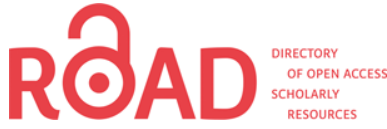An Advanced Approach of Optimal Routing Protocol for WSN Using Grey Wolf Optimizer
DOI:
https://doi.org/10.58564/IJSER.3.1.2024.143Keywords:
computational cost, cluster heads, sink node mobility, energy consumption, routing protocolAbstract
This study investigates the performance of an optimal routing protocol in Wireless Sensor Networks (WSNs) based on the Grey Wolf Optimizer (GWO), which is considered an outstanding Metaheuristic optimization technique. Unlike numerous previous studies, this research develops an advanced approach by optimizing the cluster head nodes and sink node mobility, which are essential elements for achieving an optimal routing protocol in WSNs. Several crucial factors, including the rate of energy consumption, and others are considered to ensure trustworthy routing. To demonstrate the feasibility of the proposed approach, three other methods are utilized in a comparative study. Various evaluation measures are exploited, including the number of alive nodes, mean throughput, probability of avoiding unsuitable cluster heads, energy consumption, and computation cost. The simulation results clearly reveal the superiority of the GWO compared to the aforementioned schemes over 5000 implementation rounds. Throughout the simulations, the total number of nodes (700) in the proposed WSN remained operational up to 4500 rounds, with the attained throughput staying above 1000 (bit/sec). Notably, the number of dead nodes remains at 0 after 1500 rounds. Moreover, the probability of avoiding unsuitable cluster heads is the highest, and the packet delivery ratio consistently remains at or above 68%. Additionally, the energy consumption of nodes achieved by the GWO is the lowest and does not exceed 200 Joules, while the computational cost significantly declines to reach 30.5%.
References
P. Singh, R. Singh, P. Singh, J. S. Chohan, S. Sharma, M. Sadeghzadeh, and A. Issakhov, “ Magnetic induction technology-based wireless sensor network for underground infrastructure, monitoring soil conditions, and environmental observation applications: Challenges and future aspects” Journal of Sensors, vol.1,,no.1,pp. 1-18,2022. DOI: https://doi.org/10.1155/2022/9332917
M., Zivkovic, N. Bacanin, E. Tuba, I. Strumberger, T. Bezdan, and M. Tuba, “ Wireless sensor networks life time optimization based on the improved firefly algorithm” In International Wireless Communications and Mobile Computing (IWCMC) ,pp. 1176-1181,June,2020. DOI: https://doi.org/10.1109/IWCMC48107.2020.9148087
M. F. Ali, D. N. K. Jayakody, Y. A. Chursin, S. Affes, and S. Dmitry , “ Recent advances and future directions on underwater wireless communications” Archives of Computational Methods in Engineering, vol.27,no.1,pp. 1379-1412,2020. DOI: https://doi.org/10.1007/s11831-019-09354-8
G. K. Ijemaru, K. L. M. Ang, and J. K. , Seng, “ Wireless power transfer and energy harvesting in distributed sensor networks: Survey, opportunities, and challenges” International journal of distributed sensor networks, vol.18, no.3, pp. 21-40,2022. DOI: https://doi.org/10.1177/15501477211067740
V. Sathya, and S. Kannan, “ Lifetime Escalation and Clone Detection in Wireless Sensor Networks using Snowball Endurance Algorithm (SBEA)" KSII Transactions on Internet and Information Systems, vol.16,no.4, 2022. DOI: https://doi.org/10.3837/tiis.2022.04.008
I. Ahmad, T. Rahman, A. Zeb, I. Khan, M. T. B. Othman, and H. Hamam, “ Cooperative energy-efficient routing protocol for underwater wireless sensor networks” Sensors,vol. 22,no.18, pp.69-45,2022. DOI: https://doi.org/10.3390/s22186945
C. Shivalingegowda, and P. V. Y. Jayasree, “ Hybrid gravitational search algorithm based model for optimizing coverage and connectivity in wireless sensor networks” Journal of Ambient Intelligence and Humanized Computing, vol.12, pp.2835-2848,2021. DOI: https://doi.org/10.1007/s12652-020-02442-9
R. Lavanya, and N. Shanmugapriya, “ An intelligent data fusion technique for improving the data transmission rate in wireless sensor networks” International Journal of Computational Intelligence and Applications,vol. 22,no. 1, pp23-41,2023. DOI: https://doi.org/10.1142/S1469026823410043
A. Alghamdi, A. M. Al Shahrani, S. S. AlYami., I. R. Khan, P. S. G. Sri, P. Dutta, and P. Venkatareddy, “ Security and energy efficient cyber-physical systems using predictive modeling approaches in wireless sensor network” Wireless Networks, vol.3,no.1,pp.1-16,2023.
E. Fazel, H. E Najafabadi, M. Rezaei, and H. Leung, “Unlocking the Power of Mist Computing through Clustering Techniques in IoT Networks” Internet of Things, vol.3,no.1,pp.710,2023. DOI: https://doi.org/10.1016/j.iot.2023.100710
A Kumar, P. Dadheech, and U. Chaudhary, “ Energy conservation in WSN: A review of current techniques” In 3rd International Conference on Emerging Technologies in Computer Engineering: Machine Learning and Internet of Things (ICETCE) ,pp. 1-8, February,2020. DOI: https://doi.org/10.1109/ICETCE48199.2020.9091736
A. Mosavifard and H. Barati, “An energy-aware clustering and two-level routing method in wireless sensor networks” Computing, vol.102, no.7, pp.1653-1671,2020. DOI: https://doi.org/10.1007/s00607-020-00817-6
H. R. Farahzadi, M. Langarizadeh, M. Mirhosseini, and S. A. Fatemi Aghda, “ An improved cluster formation process in wireless sensor network to decrease energy consumption” Wireless Networks, vol. 27, no.1,pp.1077-1087,2021. DOI: https://doi.org/10.1007/s11276-020-02485-y
M. A Tamtalini, A. E. B. El Alaoui, and A. El Fergougui, “ ESLC-WSN: a novel energy efficient security aware localization and clustering in wireless sensor networks” In 1st International Conference on Innovative Research in Applied Science, Engineering and Technology (IRASET) ,pp. 1-6,April,2020. DOI: https://doi.org/10.1109/IRASET48871.2020.9092203
S. Al-Sodairi, and R. Ouni, “ Reliable and energy-efficient multi-hop LEACH-based clustering protocol for wireless sensor networks. Sustainable computing: informatics and systems”, vol. 20, no.1, pp. 1-13,2018. DOI: https://doi.org/10.1016/j.suscom.2018.08.007
A. Singh, S. Sharma, and J. Singh ,“ Nature-inspired algorithms for wireless sensor networks: A comprehensive survey” Computer Science Review, vol.39,no.1 ,pp.342,2021. DOI: https://doi.org/10.1016/j.cosrev.2020.100342
E. Moharamkhani, B. Zadmehr, S. Memarian, M. J. Saber, and M. Shokouhifar, “ Multiobjective fuzzy knowledge‐based bacterial foraging optimization for congestion control in clustered wireless sensor networks” International Journal of Communication Systems, vol.34, no.16,pp.48-49,2021. DOI: https://doi.org/10.1002/dac.4949
I. E. Agbehadji, R. C. Millham, A. Abayomi, J. J. Jung, S. J. Fong, and S. O. Frimpong, “ Clustering algorithm based on nature-inspired approach for energy optimization in heterogeneous wireless sensor network” Applied Soft Computing, vol.104, no.3,pp107-171,2021. DOI: https://doi.org/10.1016/j.asoc.2021.107171
L. Nagarajan, and S. Thangavelu, “ Hybrid grey wolf sunflower optimisation algorithm for energy‐efficient cluster head selection in wireless sensor networks for lifetime enhancement”Iet Communications, vol.15, no.3,pp. 384-396,2021. DOI: https://doi.org/10.1049/cmu2.12072
Abed, N. K., Shahzad, A., & Mohammedali, A. (2023). An improve service quality of mobile banking using deep learning method for customer satisfaction. In AIP Conference Proceedings (Vol. 2746, No. 1). AIP Publishing. DOI: https://doi.org/10.1063/5.0152335
A. N. Shahbaz, H. Barati, and A. Barati , “ Multipath routing through the firefly algorithm and fuzzy logic in wireless sensor networks”Peer-to-Peer Networking and Applications, vol.14,no.2, pp.541-558,2021. DOI: https://doi.org/10.1007/s12083-020-01004-2
X. Yuan, M. Elhoseny, H. K. El-Minir, and A. M. Riad, “ A genetic algorithm-based, dynamic clustering method towards improved WSN longevity” Journal of Network and Systems Management, vol.25,no.1 ,pp.21-46,2017. DOI: https://doi.org/10.1007/s10922-016-9379-7
A. Sarkar, and T. Senthil Murugan , “ Cluster head selection for energy efficient and delay-less routing in wireless sensor network” Wireless Networks, vol.25,no.1,pp. 303-320,2019. DOI: https://doi.org/10.1007/s11276-017-1558-2
A. Barzin, A. Sadegheih, H. K. Zare, and M. Honarvar, “ A hybrid swarm intelligence algorithm for clustering-based routing in wireless sensor networks” Journal of Circuits, Systems and Computers, vol.29,no.10, pp. 50-63,2020. DOI: https://doi.org/10.1142/S0218126620501637
G. Kumaran, and C. Yaashuwanth , “ E2MR-HOA: Conservation of Energy through Multi-Hop Routing Protocol for WSN’S Using Hybrid Optimization Algorithm” Journal of Circuits, Systems and Computers,vol .30,no.1, pp. 41,2021. DOI: https://doi.org/10.1142/S0218126621500419
I. B. Prasad, S. S. Yadav, and V. Pal , “ HLBC: A hierarchical layer-balanced clustering scheme for energy efficient wireless sensor networks” IEEE Sensors Journal, vol.21,no.22, pp.26149-26160,2021. DOI: https://doi.org/10.1109/JSEN.2021.3114506
J. Sengathir, A. Rajesh, G., Dhiman, S. Vimal, C. A Yogaraja, and W. Viriyasitavat , “ A novel cluster head selection using Hybrid Artificial Bee Colony and Firefly Algorithm for network lifetime and stability in WSNs” Connection Science, vol.34,no.1, pp.387-408,2022. DOI: https://doi.org/10.1080/09540091.2021.2004997
P. S. Khot, and U. Naik, “ Particle-water wave optimization for secure routing in wireless sensor network using cluster head selection” Wireless Personal Communications, vol.119, no.1,pp.2405-2429,2021. DOI: https://doi.org/10.1007/s11277-021-08335-0
N. Ajmi, A. Helali, P. Lorenz, and R. Mghaieth, “ MWCSGA—multi weight chicken swarm based genetic algorithm for energy efficient clustered wireless sensor network” Sensors, vol.21,no.3, pp.791,2021. DOI: https://doi.org/10.3390/s21030791
J. Daniel, S. F. V. Francis, and S. Velliangiri, “ Cluster head selection in wireless sensor network using tunicate swarm butterfly optimization algorithm” Wireless Networks, vol.27, no.1,pp.5245-5262,2021. DOI: https://doi.org/10.1007/s11276-021-02812-x
B. A., S. Janakiraman, D.P. M, “ Modified African buffalo and group teaching optimization algorithm based clustering scheme for sustaining energy stabilityand network lifetime in wireless sensor networks” Trans. Emerg. Telecommun.Technol.,vol.33 no.1,2021. DOI: https://doi.org/10.1002/ett.4402
V. Vimal, K. U. Singh, A. Kumar, S. K. Gupta, M. Rashid, R. K Saket, and S. Padmanaban, “ Clustering isolated nodes to enhance network's life time of WSNs for IoT applications” IEEE Systems Journal, vol.15, no.4, pp.5654-5663,2021. DOI: https://doi.org/10.1109/JSYST.2021.3103696
K. Meidani, A. Hemmasian, S. Mirjalili, and A. Barati Farimani , “ Adaptive grey wolf optimizer” Neural Computing and Applications”, vol.34,no.10, pp.7711-7731,2022. DOI: https://doi.org/10.1007/s00521-021-06885-9
T. Sang-To, H. Le-Minh, S. Mirjalili, M. A. Wahab, and T. Cuong-Le, “ A new movement strategy of grey wolf optimizer for optimization problems and structural damage identification” Advances in Engineering Software, vol.173, no.3,pp.32-76,2022. DOI: https://doi.org/10.1016/j.advengsoft.2022.103276
I. A. Zamfirache, R. E Precup, R. C. Roman, and E. M. Petriu, “ Policy iteration reinforcement learning-based control using a grey wolf optimizer algorithm” Information Sciences, vol.585,no.1 ,pp.162-175,2022. DOI: https://doi.org/10.1016/j.ins.2021.11.051
S. Mirjalili, M. Mirjalili, and L.Andrew, “ Grey wolf optimizer” Advances in engineering software, vol.69,no.1, pp.46-61,2014. DOI: https://doi.org/10.1016/j.advengsoft.2013.12.007
Singh, J., Deepika, J., Sathyendra Bhat, J., Kumararaja, V., Vikram, R., Jegathesh Amalraj, J., ... & Sakthivel, S. (2022). "Energy-efficient clustering and routing algorithm using hybrid fuzzy with grey wolf optimization in wireless sensor networks". Security and Communication Networks, Vol. 2022, 12 pages. DOI: https://doi.org/10.1155/2022/9846601
Dentoni, V., Lai, A., Pinna, F., Cigagna, M., Massacci, G., & Grosso, B. (2023). "A comprehensive methodology for the visual impact assessment of mines and quarries". Environmental Impact Assessment Review, Vol.102, P.107199. DOI: https://doi.org/10.1016/j.eiar.2023.107199

Downloads
Published
How to Cite
Issue
Section
License
Copyright (c) 2024 Omar Hisham Rasheed alsadoon

This work is licensed under a Creative Commons Attribution-ShareAlike 4.0 International License.
Deprecated: json_decode(): Passing null to parameter #1 ($json) of type string is deprecated in /var/www/vhosts/ijser.aliraqia.edu.iq/httpdocs/plugins/generic/citations/CitationsPlugin.inc.php on line 49









